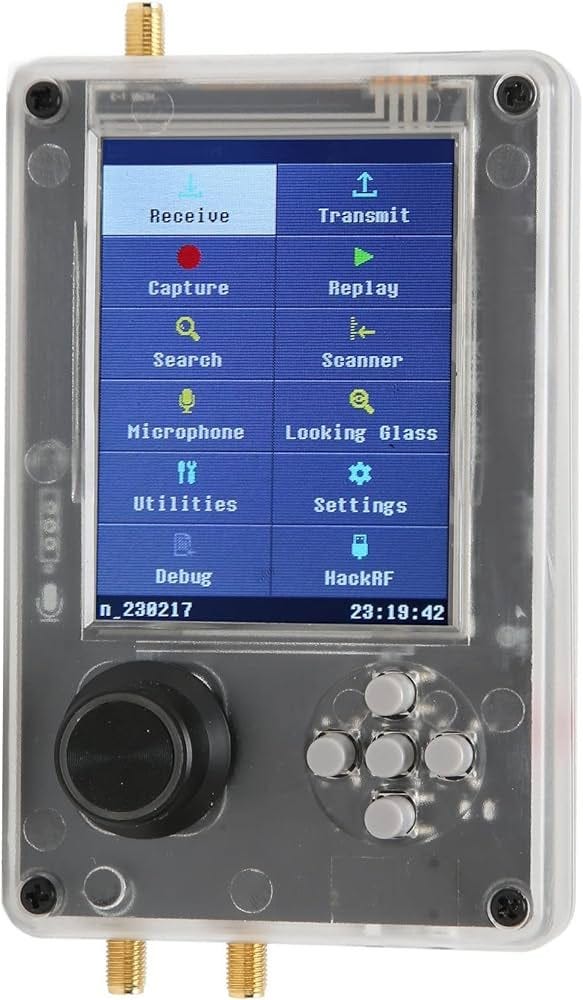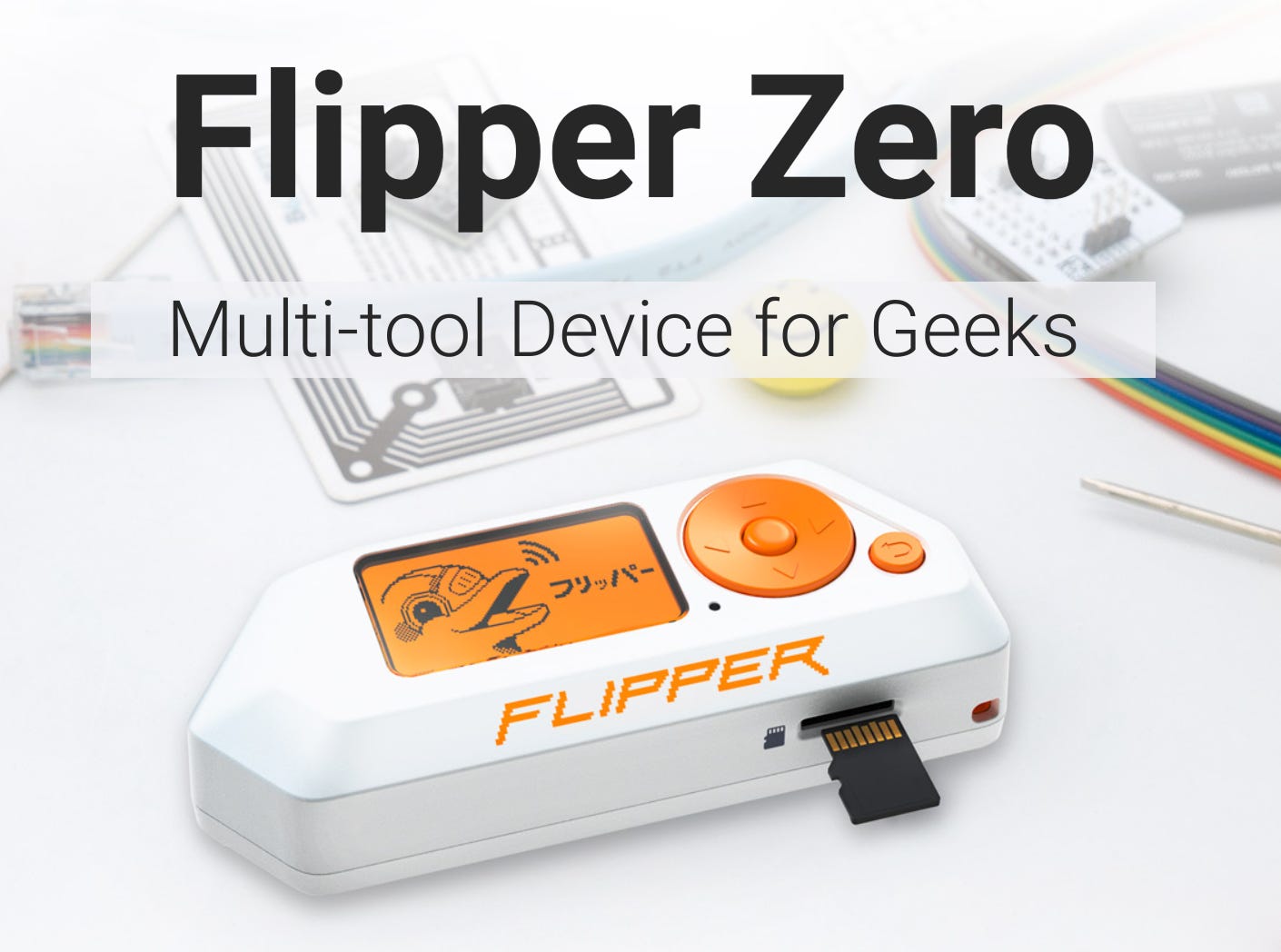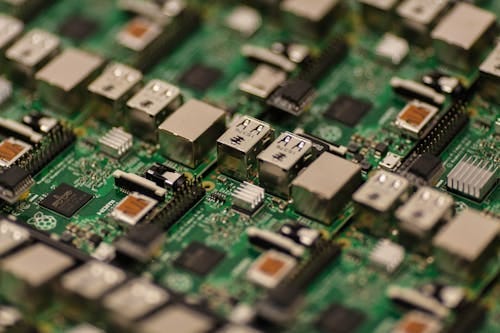Radio On The Go: Portable SDR
If you aren’t a medium member, you can read with no paywall via substack
Home labs are pretty cool. Depending on your interests, we’ll often find an array of test equipment, hardware systems and even remote servers or systems. Having a centralised space for experimentation can be a great way to get the most from your learning path, giving you a safe, controlled environment to examine systems and software.
Home labs are pretty fun, but getting out and about is even better. Source: Pexels.com
Once you’ve started to get your head around the radio spectrum though, you’ll probably find there comes a time when you want to take your equipment out and about or on the go. You might decide to take it on holiday, or to a more active site like a large city or similar. Alternatively, you might decide to set up a web-based listening station somewhere away from your home lab. Or, you simply might like to use it for wardriving, mapping and identifying Wi-Fi systems and devices as you go about your day.
To make your on-the-go activities run a bit more smoothly, today, we’ll be taking a look at a few options for getting you on the air and capturing signals across the airwaves with ease.
Why Portable
While thinking of a home lab system can bring up images of a large, complex system, the fact is that while this can often be true, portable systems in the modern world can be extremely small. Often, you’ll be limited by the need for an antenna, but the receivers and host systems are usually pretty small and antennas can be customised to be either wideband where possible or target to the frequency range that you might be interested in.
However, when we’re looking at portable stations it’s also important to remember the context of the time in which these systems were often used. In a world without mobile telephones, radio receivers and transmitters became a lifeline. Not only did they provide essential communication and the chance of contact in the most remote regions of our planet, but they also provided reliable navigation signals (LORAN) in a pre-GPS world.
Because of this, in the post-war era and even today, you’ll find mobile stations equipping aircraft, boats and remote land-based stations with reliable communications across all parts of the spectrum. So, the concept of taking our equipment mobile is most certainly not foreign and could even be considered an essential skill depending on your interests or background. 
Going mobile allows you to chase new satellites and marginal signals or even carry out signal geolocation. Source: Pexels.com
For those interested in SIGINT or analysis, having portable stations means we’re equipped to chase and detect signals wherever we might find them. A particularly useful skill for those who are interested in satellites and space communications.
The Options
While these are considered a good place to start, it’s best to consider your own circumstances when looking at what you might need in the way of hardware to get out and about. If you’re a hobbyist, you might not need a top-shelf system and might be happy using a simple RTL-based system. Alternately if you don’t have a license you might choose to use a receive-only system rather than outlaying additional money for a feature you’ll rarely use. And of course for most people, budget is also a factor as once you move from receiver to transmitter, things can get expensive fast particularly if you’re interested in microwave signals.
As always, we should make decisions based on our circumstances.
Laptop & RTL -SDR Dongle
The easiest way to get started on the go, is by using your existing laptop and radio receiver. Providing a simple and familiar way to use your system, it’s also easily configurable and can scripts where needed.
The downside we’ll have with a system such as this is that due to its size, it’s not really ideal for walking around. And while customisation is useful, the average modern laptop is a thirsty beast. When paired with the fact that software-defined radio can often be quite heavy on the processor, more often than not we’ll need to feed our laptop with adequate power as well. 
An old laptop with a USB SDR provides a capable albeit power-hungry station. Source Pexels.com
It’s a great way to get started though, and for most people is a great place to start figuring out if you enjoy this and might be interested in getting some additional equipment.
HackRF Portapack
Providing a battery-powered system that’s only limited by your imagination, the HackRF is a broadband receiver and transmitter. With a number of different iterations, and capable firmware to drive the system, the HackRF provides receive, transmit, capture, replay and scanning features as well as much much more. 
With a rotary controller and push-button configurations, all wrapped in a solid plastic casing, the HackRF is rugged, versatile and most importantly, open source.
To get started, you’ll simply need a range of capable antennas and a willingness to get out there and test your hardware.
The best bit about HackRF is the wide array of tutorials and educational content developed with the system. We’ll even be taking a look at the Mayhem version of the Portapack in future articles.
Flipper Zero
While the Flipper is pretty limited as far as transmitters go, its ability to spoof, record, clone and retransmit a wide array of commonly used signals at protocols means it makes it to today’s list.
While using the Flipper will mostly limit you to higher band signals that work around hardware limitations, it’s still a pretty fun way to get yourself started out and about.
With a rugged housing, small screen and keypad control, as well as onboard GPIO pics the Flipper is all the rage at the moment. 
Because of this, like the HackRF you’ll also find a large array of tutorials, hardware expansions and software add-ons to help supercharge your learning.
It’s worth mentioning though, that some serious enthusiasts or professionals may find the limitations of the Flipper to be unsuited to their role. However, for some hobbyist-level experimenters, this might be their prime and only choice of hardware. It’s all a matter of perspective.
Do It Yourself
While there are some great pre-built systems available, you might have noticed that some of the off-the-shelf setups come with a significant price point for entry, and it’s reasonable to assume that for some people this might be a significant barrier to entry.
However, you might also find that an off-the-shelf system isn’t working in the way you might hope, or isn’t capable of carrying out things you might be interested in. Or, you might just like to get your hands dirty experimenting with some hardware. 
Regardless of which side of the fence you might be on, it’s worth considering the benefits and advantages that can come with setting up your own, custom configuration.
For a lot of people, this might look somewhat similar. Often, it’s a single-board computer like a Raspberry Pi, paired with the appropriate SDR hardware and software to configure it to run.
It’s worth mentioning that many Linux repositories and even operating systems are available to get systems like this up and running fast. The APT repository manager holds packages like rtl466 and dump1090 for ADS-B, while the Dragon OS operating system provides a vast array of radio-based SIGINT resources. We’ll be exploring and reviewing Dragon OS in later articles, checking out some of the reasons as to why you might want to use it.
Over To You
In this article, while we’ve looked at simple ways to get out and start exploring, the reality is that there is much in the way of role-specific hardware available.
If you’re interested in signal detection & geolocation the Kerbeross SDR might just be the system for you. Providing a quick and easy way to geolocate signals of interest, this RTL-based system is a turnkey package that’s ready to go.
While we should always respect the bounds of intellectual property and copyright, browsing other people's projects or even commercial products can give different insights into problems or new ways to implement different hardware or technology.
While radio for many is considered an “old technology”, modern refinements in software, hardware and research have breathed new life into a once-dated medium.
Medium has recently made some algorithm changes to improve the discoverability of articles like this one. These changes are designed to ensure that high-quality content reaches a wider audience, and your engagement plays a crucial role in making that happen.
If you found this article insightful, informative, or entertaining, we kindly encourage you to show your support. Clapping for this article not only lets the author know that their work is appreciated but also helps boost its visibility to others who might benefit from it.
🌟 Enjoyed this article? Support our work and join the community! 🌟
💙 Support me on Ko-fi: Investigator515
📢 Join our OSINT Telegram channel for exclusive updates or
📢 Follow our crypto Telegram for the latest giveaways
🐦 Follow us on Twitter and
🟦 We’re now on Bluesky!
🔗 Articles we think you’ll like:
- What The Tech?! Rocket Engines
- OSINT Investigators Guide to Self-Care & Resilience
✉️ Want more content like this? Sign up for email updates



































































